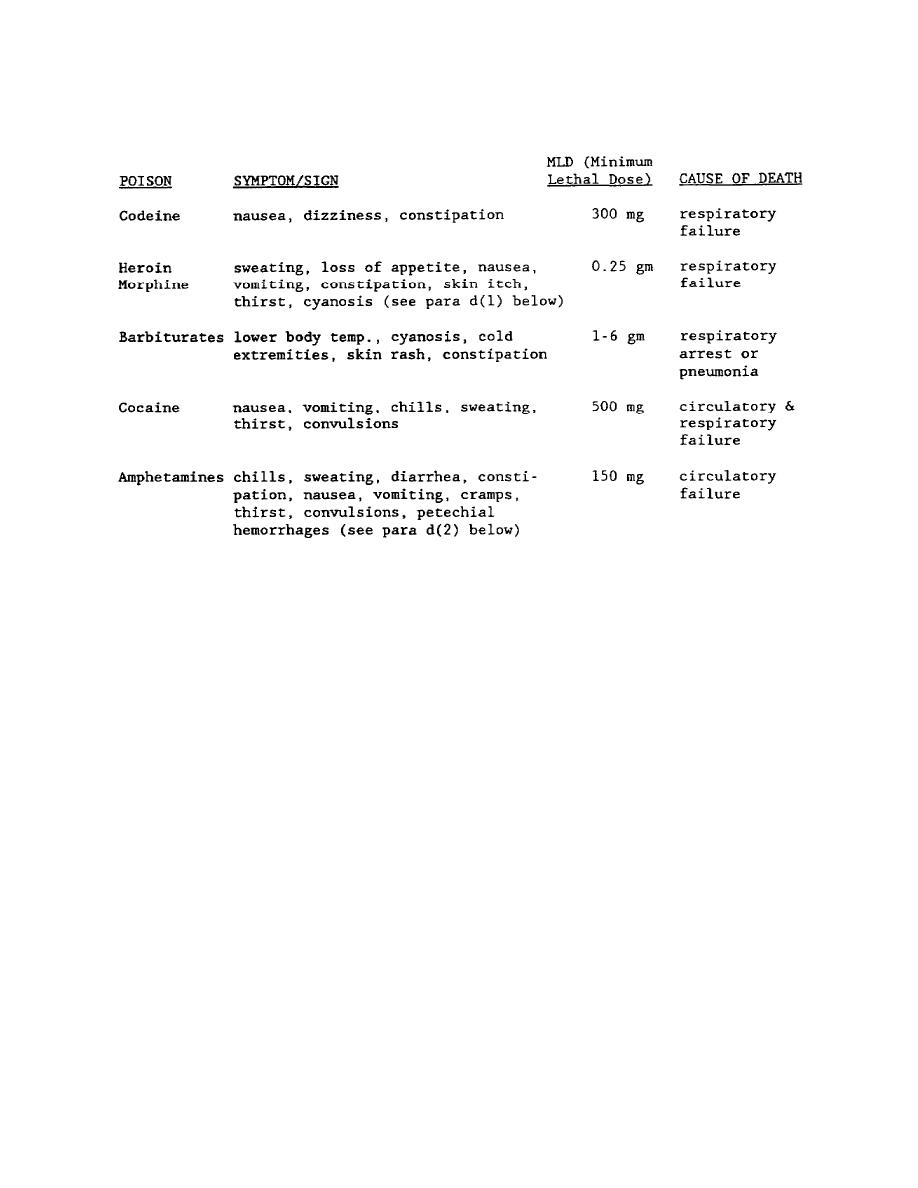
c. Symptoms of poisoning are: thirst, cold sweating and skin irritation.
Others are: dizziness, cramps, nausea, and appetite loss.
d. When asphyxia is the cause of death it is often accompanied by external
body change. These changes are visible to the naked eye. They may be found in
any asphyxial death, such as heart failure, drowning, or hanging. They must be
noted, photographed, and reported to the pathologist during the pre-autopsy
interview.
(1) Cyanosis - This results in a bluish discoloration of the face or
fingernails.
Cyanosis results from auto-intoxication by the accumulation of
carbon dioxide in the body.
(2) Petechial Hemorrhages - This appears as pinpoint discoloration.
(resembling freckles, only black in color) resulting from capillary rupture.
These signs normally are found on the eyelids, facial skin, and shoulders.
(3) Saliva/Foam - Found at the nose and mouth of the asphyxial victim,
this substance may be blood-stained.
This foam is the result of fluids
entering the air passages which are producing mucous. The respiratory efforts
of the victim whips the mixture into foam. This foam is tenacious and often
reappears if removed.
e. Other body factors which may indicate narcotic involvement in death are
listed below. If noted during investigation, they should be photographed and
reported to the pathologist.
6-19
MP0100



 Previous Page
Previous Page
